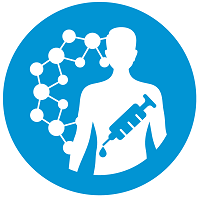Preclinical and Translational Sciences
Session: Symposium: Evolving Clinical Pharmacology and Translational PK/PD Approaches For New Modalities
PK/PD Modeling of Bispecific T Cell Engagers for Clinical Translation
Tuesday, October 24, 2023
9:30 AM - 10:00 AM ET
Location: 309 AB West

Yanguang (Carter) Cao, PH.D
Associate Professor
University of North Carolina at Chapel Hill
Speaker(s)
Tremendous advancements in genetic engineering led to the development of novel modalities including gene therapies. Investigation of Adeno-Associated Virus (AAV)-based ocular gene therapies is at the forefront, especially to treat many genetic or degenerative diseases. Despite significant growth in its development, several gaps and translational challenges continue to exist. For instance, conventional concepts of pharmacokinetics (PK)/pharmacodynamics (PD) which would otherwise be applicable to small molecules or biologics are not relevant for novel modalities such as gene therapies. Moreover, the eye is a highly compartmentalized organ with unique cell biology that further impacts the PK/PD behavior of ocular AAV gene therapies. Hence, there is no consensus on the utility of preclinical studies to guide First-In-Human (FIH) doses as conventional allometric scaling approaches might be less precise thereby hindering decisions concerning the dose and route of administration. This symposium presentation will cover physiologically based PK/PD modeling approaches for ocular AAV gene therapies with case studies. It will highlight the quantitative relationships for gene products from administration to AAV transduction and protein synthesis within the eye sub-compartments. In addition, the differences in the route of administration (intravitreal vs. subretinal) and its impact on dose-response relationships and immune and inflammatory reactions will be discussed.
The above presentation is one of the four topics proposed under the symposium titled ‘Evolving Clinical Pharmacology and Translational PK/PD approaches for cell and gene therapies’. The proposed symposium can be a two-hour session with 4 talks of 30 minutes. In addition to the above presentation on gene therapy, 2 other talks on cell therapy and 1 other talk on gene therapy are proposed separately to be a part of the same symposium.
The above presentation is one of the four topics proposed under the symposium titled ‘Evolving Clinical Pharmacology and Translational PK/PD approaches for cell and gene therapies’. The proposed symposium can be a two-hour session with 4 talks of 30 minutes. In addition to the above presentation on gene therapy, 2 other talks on cell therapy and 1 other talk on gene therapy are proposed separately to be a part of the same symposium.
Learning Objectives:
- Upon completion, participant will be able to understand the pharmacological actions, immunological synapse formation, and basic exposure-response relationships of bispecific T cell engagers.
- To emphasize the significance of modeling immunological synapse formation in order to comprehend the exposure-response relationships of bispecific T cell engagers.
- To underscore the significance of immunological synapse formation in the clinical application of bispecific T cell engagers.

